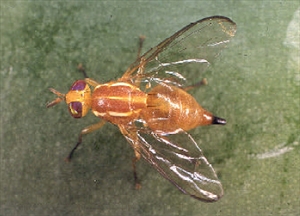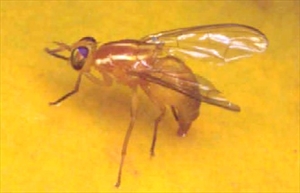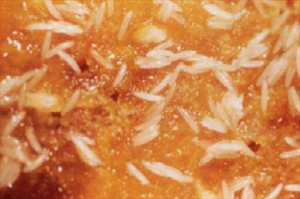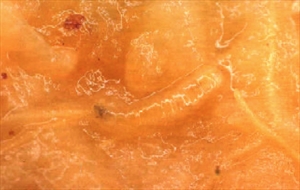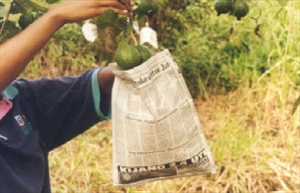- Bactrocera kirki – abiu, avocado, guava, mango, noni, Malay apple, and more; and B. xanthodes - abiu, avocado, breadfruit, jackfruit, papaya, soursop, and more. Both, are of economic importance. A third, B. distincta, in a minor pest of star apple.
- Females need protein before they can lay viable eggs.
- Cultural control: growing vegetables out of season; bag fruit with paper or leaves; collect fallen fruit and destroy; harvest early (papaya); some non-hosts, e.g., chilli, pineapple.
- Chemical control: use a commercial protein bait spray, e.g. MPPIL, Royal Tongalure or Bactrogel.

